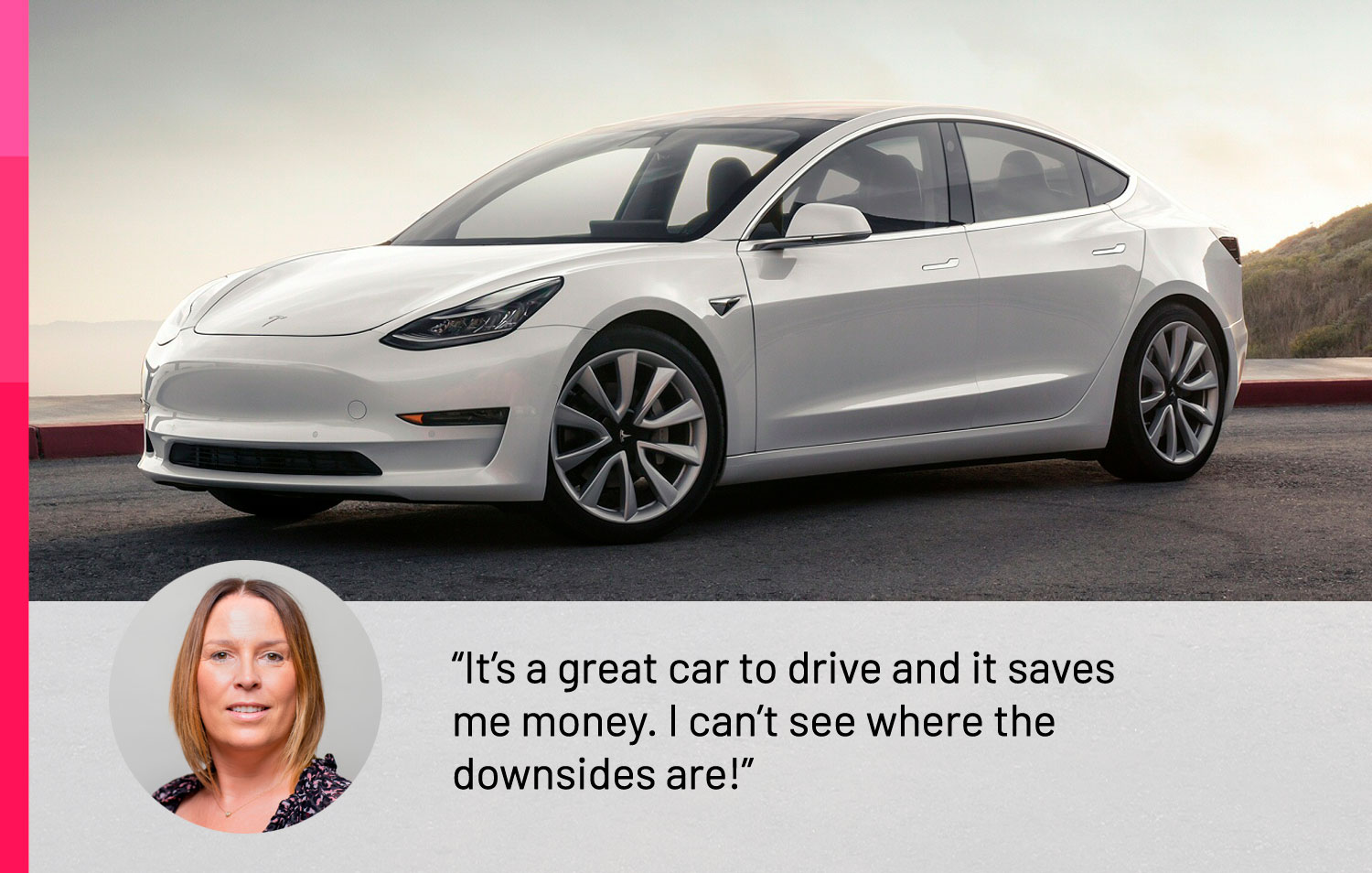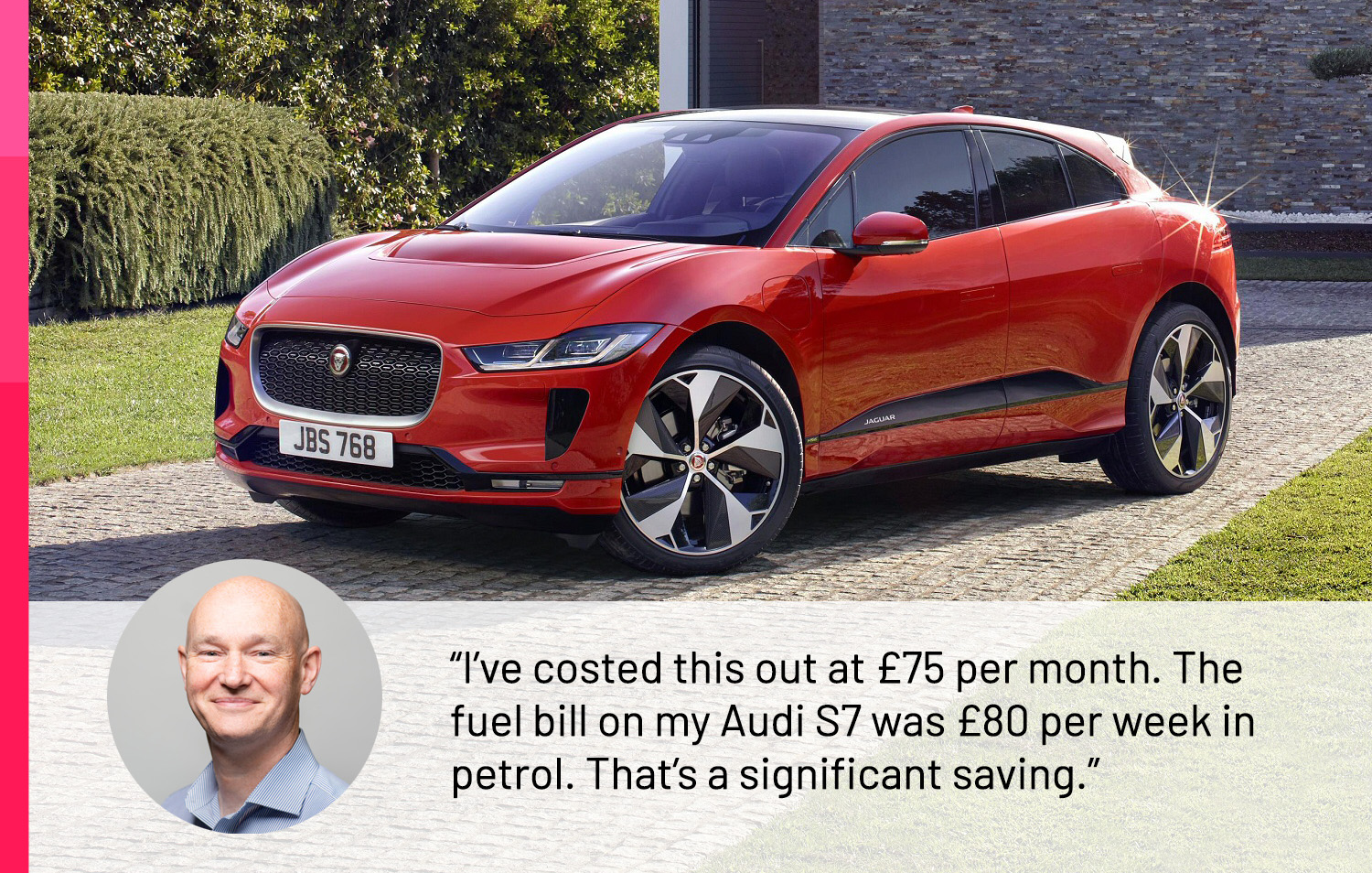S h a r e
Choosing an EV – when you have your own driveway or garage


Posted by
The EV Team
August 2023
Drivers with their own driveway or garage are in the ideal position to easily switch to an electric vehicle (EV).
For some people, the barrier to EV adoption is the charging infrastructure, but if you can charge at home, you can start each day with a full charge and hundreds of miles available from your EV.
By installing a home wallbox, you can conveniently top-up, and keep EV running costs as low as possible when charging your car.
But first, let’s start with the choice of vehicle.
The range of electric vehicles on the market today is huge. It covers every sector, from city cars such as the Fiat 500e or MINI Electric to large SUVs such as the Audi Q8 e-tron – and just about everything in between.
If you’re looking for any car, there’s an EV for you. But you will need to work out exactly what you need from it to pick the right model.
Ask yourself what sort of trips you make on a regular, or even occasional basis? This will help determine how much range you really need rather than basing your requirement on the ‘what if we were to travel to [insert faraway choice of destination]’. EVs can cover that too, but it’s important to consider what your really need.
Most electric cars today can comfortably cover more than 200 miles, and it’s easy to find models with a range in excess of 300 miles; some can even cover more than 400 miles on a charge. To put this into perspective, the Department for Transport National Travel Survey shows that the typical average daily mileage is only about 12 miles – and that’s on a downward trend. At less than 85 miles a week, most EVs will only need a full charge every three weeks or so.
Although you may have an idea that you need an EV with a battery range of 300+ miles, properly analysing your driving needs could see you use a 200-mile EV with no compromise to your journey patterns.
But what if I need to go further than my range?
It’s simple enough to keep on the move for those occasionally rare journeys that exceed your EV’s full range. But on these occasions a little more planning is required than if you were driving a petrol or diesel car.
You can use apps and websites such Zap-Map that lists all of the public electric charge points in the UK. Most mapping services also feature a route planner so you can plot a trip via any required chargers. Many are now available with an Apple CarPlay or Android Auto compatibility, so drivers can have them in-car as they drive.
Manufacturer-fitted navigation also has charge points stored within the system, and most of these are updated regularly via the car’s on-board SIM, so there’s less chance of the map being out of date.
For non-company car drivers, use salary sacrifice to access an EV
The benefits of electric cars are not just the preserve of company car drivers. Employees can access an electric car salary sacrifice scheme if offered by the company, which is far cheaper than leasing an EV personally, as well as preserving personal credit lines.
Electric car salary sacrifice essentially works by sacrificing some gross salary for an EV. There is some company car tax to pay – but this is minimal – and with the lower National Insurance and tax by the reduced gross salary makes it a highly tax-efficient way to access the low operating costs and zero tailpipe emissions of running an EV. If your employer doesn not operate an electric car salary sacrifice scheme, then ask them to consider it as a significant employee benefit.
Electric cars are cheaper to run
Regardless of whether you are a company car driver or not, electric cars are cheaper to run. Fuel costs are typically around 8-12p per mile when using the UK’s average electricity costs, but that can easily drop to less than 4p per mile on an off-peak tariff. Compare that to petrol cars costing around 14p per mile, and diesels around 12p per mile, and significant savings can be made when comparing similar models.
It’s not just the hundreds of pounds saved in fuel costs that benefit EV drivers. Maintenance costs are significantly reduced too, because of how electric cars work. The electric motor has no tiny explosions taking place every second, as a combustion engine does. There is also less need for cooling of that motor, there is no gearbox to have to maintain, and far fewer moving parts in general.
Even consumables such as brakes will last longer, thanks to an EV’s brake energy recuperation system. This uses the motor to charge the battery, rather than draw from it, when slowing down. It is surprisingly effective and replaces the need to use the brakes so often in an EV.
Drive with care, and even tyres won’t cost much more, though with the instant torque available and heavier nature of EVs, tyre wear can be a little more than “normal”. Regardless, most operators believe that an EV is at least 11% less costly to maintain than a traditional company car.
Ordering a home smart charger
Although it is possible to charge an electric vehicle via a three-pin plug socket this is not advisable except in an emergency. The 13 amp domestic electricity circuit is not designed to take such loads continuously. It would also take a long time to charge your car’s battery.
It is much more practical to use a home charger that can be fitted to an outside wall close to a driveway, or inside a garage.
What sort of home charger should I use?
There are four levels of domestic home charger:
- 6kW – this will charge 1.6x faster than a domestic three-pin socket
- 2kW – this will charge 3x faster than a domestic three-pin socket
- 11kW – this will charge 5x faster than a domestic three-pin socket
- 22kW – this will charge 10x faster than a domestic three-pin socket
It is simple to work out how quickly your battery will be charged simply by dividing the capacity of your battery by the output of your charger. So if, for example, we take the Renault Zoe with its 52kWh battery it would take the following length of time to be fully charged.
Time to charge a Renault Zoe 52kWh on standard chargers:
- 6kW – 14 hours
- 2kW – 7 hours
- 11kW – 5 hours
- 22kW – 5 hours
Our recommendation would be a 7.2kW charger. This provides a quick enough charge to be able to have your car fully ready the next morning after an overnight charge, or you can quickly top up the battery if you need to. It’s also at a sweet spot of cost and charging speed.
If you wanted an 11kW or 22kW charger, your property would need a three-phase supply, which could be costly to upgrade to if it doesn’t have it already. Equally, many EVs can’t charge faster than 7.2kW or 11kW anyway, so a more powerful point would not make any difference to charging times.
Tethered or untethered?
When you are considering a home charger you will normally be offered the choice of a tethered charger or an untethered charger.
A tethered charge is where a cable is attached to the charger and you simply unwind it from its housing and plug it into your car’s connector.
An untethered charger comes with no cable – you just use the charging cable supplied with your car and plug it into the connector in your car and the charging connector.
Grants for a home charger
The OZEV (Office for Zero Emission Vehicle) previously offered a grant for installing a homecharger. However the grant is now only available to people living in rented properties or flats with dedicated off-street parking. In addition, applications have been suspended for the Energy Saving Trust grant that was previously available to Scottish residents.
Help with a home charger
Fleet Alliance has partnered with Scottish Power to form a new alliance called Fleet Zero. As part of that alliance, ScottishPower will be able to instal both home chargers and workplace charging facilities for customers leasing their vehicles from Fleet Alliance. It’s just one way to make electrification simpler all round.
Changing electricity supplier
It is worth considering whether it is worth changing your electricity supply to make the most of off-peak energy tariffs depending on when you charge your car.
Home chargers usually come with an app that allows you to schedule your charging requirements to make the most of cheaper energy tariffs. You may also like to consider the benefits of switching to a green electricity supplier to match your new green car.
Most energy providers offer an EV-tailored tariff – both with off-peak charging times and a green energy promise – and comparison sites such as uSwitch will show what’s available.
Finally, enjoy the EV driving experience!
Once your new electric lease car has been delivered you can start to enjoy the benefits of driving electric.
The key things you will notice is the silence at take-off and then just a slight humming sound when you are on the road. They are also very quick when you want them to be, while you will also notice the additional braking assistance provided by regenerative braking.
But otherwise, it is like driving a normal car – except with zero emissions.
Case studies

Jill Sidebottom
- Drives a Tesla Model 3
- Has own driveway
- Enjoying the tax savings
Jill Sidebottom is the commercial manager at Fleet Alliance. Jill works remotely from the Glasgow headquarters of Fleet Alliance and is based in her Manchester home.
Jill decided that she would swap from diesel SUV to electric saloon and is now in a leased Tesla Model 3 Long Range as her company car. So what made her make the change?
“I began my journey into an EV by looking at a like-for-like replacement for my then-current car, which was a Range Rover Evoque diesel. But the benefit in kind tax looked extortionate.
“So the tax was a key factor behind alternative options and since Fleet Alliance was moving towards an electric-only fleet policy, I decided to take a look at the Tesla as a prominent alternative.
“My job involves a lot of driving to meet suppliers around the country, although Milton Keynes seems to be the hot spot, and part of the Tesla’s appeal was access to the Tesla rapid charger network.”
This range anxiety was a key issue for Jill. She explains why: “Previously I could jump in my car whether for work or pleasure – often I’d go to visit friends in Wales, for example – and range didn’t come into it. I’d simply find a fuel station and fill up when needed. But how would this work with an electric car? It was a real concern of mine.
“But I have to say the reality is pretty much the same, except you do have to plan things a little more. So I have pre-planned routes around when I will need to recharge the battery.
“And there have been the odd issues. I visited one dealership that said it had a charger only to arrive and find it wasn’t working. And then one day when I went to visit my mother I hadn’t given the Tesla enough charge and when I got to my mum’s I couldn’t charge it there. But having said that, I’ve never been stranded without charge. At least not yet!”
Jill says she has been absolutely delighted by the car – “it’s a great car to drive and it saves me money,” explains Jill. “I can’t see where the downsides are!”
Pod Point home charger installed
As Jill has a driveway, she had an untethered 7kWh charger fixed to the side of the house.
“I had been talking to Pod Point because we are starting to use them as suppliers for Fleet Alliance customers, so it was good to test the process. And I have to say it was a really easy and simple process to have it installed.”
At the time, Jill benefited from a grant of £500 which was available at the time towards the installation cost of the home charger, paying, in the end, £395 for the charge point.
“The way I looked at it,” Jill says, “was that it represented a month’s tax saving. When my benefit in kind tax dropped to 0% in April I was then in a positive position.”
The Tesla is now charged up overnight but Jill says there has been no significant increase in her electricity bills.
“When I was travelling for fuel I looked at forecourts for the best fuel prices; now it’s the same with electricity for the tariffs. I have since changed my provider to Bulb which has lowered my utility costs.”
Jill says that anyone considering an EV should not hold back.
“You have to be slightly careful in car parks because people cannot hear you coming, but otherwise I’d say go for it 100%. The range of electric vehicles is growing all the time, and the overall savings are considerable – plus of course, you are helping save the planet. I would not move away from an electric car now.”
David Blackmore
- Drives a Jaguar I-PACE
- Has own driveway
- Costs £75 per month to charge at home
David is the commercial director at Fleet Alliance and has always enjoyed performance cars. He decided on a Jaguar I-PACE to replace his former company car, an Audi S7.
“When it came to replacing my Audi I was convinced I had to go electric,” explains David. “It was already clear that electric was the future and I very much wanted to be part of that future. But at the time – late 2018 – the choice of executive electric cars was fairly limited, so the I-PACE worked for me in terms of specification and lease rental at the time.”
Like most prospective EV drivers, David was primarily concerned with real-world range. “Could the Jaguar achieve the stated 292 mileage range when I’m driving the car day-to-day? The answer is that the range is quite a bit lower, particularly in the winter months, although I do live south-west of Glasgow near the coast and given the often poor weather conditions, this clearly has an impact on battery range.
“But other than a few issues with over-the-air software updates the car has really been a great choice.”
Home charger installation
As Pod Point are the home charger partners with Fleet Alliance, David had a 7kw tethered home charger installed to the side of the house. “It was so easy and simple to install,” says David, “and I benefited from both the UK government grant of what was then £500 towards the installation cost and the top up from Scotland’s Energy Saving Trust so the cost to me was zero”.
David says that with his current mileage he charges the car about eight times per month. “I’ve costed this out at approximately £75.00 per month but then given the fuel bill on my Audi S7 was £80 per week in petrol that’s a significant saving!” He adds: “Plus of course I’m now paying 0% benefit in kind company car tax.
“The car is a brilliant drive with the acceleration being the best feature for me! It’s well-equipped, comfortable to drive and handles really well.”
What advice would David give to someone considering an EV?
If anyone is slightly apprehensive about the move to an EV, David says that he would encourage them to talk to a current EV driver.
“It’s important to get real-world information from a driver so you can make an informed choice on whether an EV would be right for you. I would also highly recommend taking a test drive to experience how well they drive – because they drive really, really well!”


